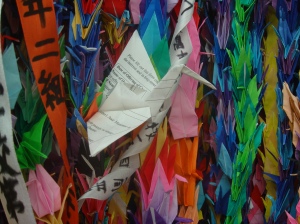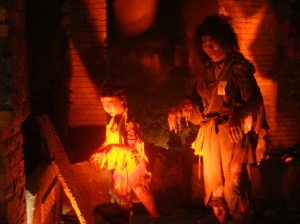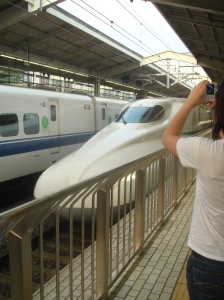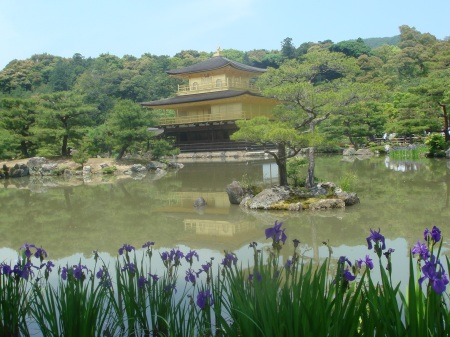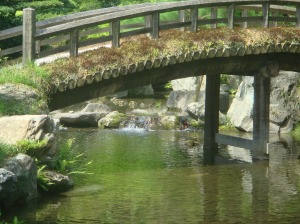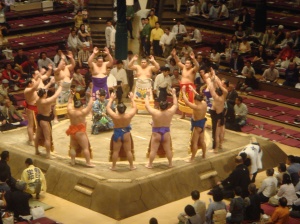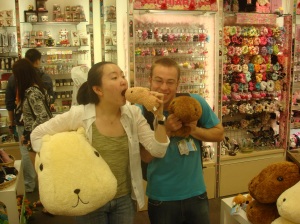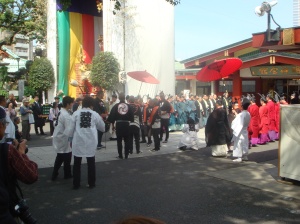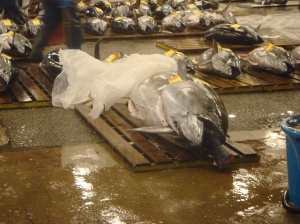
And so it ends...
Well, the bags are packed. The souvenirs are bought. The camera is out of batteries. The last beers have been drunk. Tomorrow Tokyo, and the amazing country in which it resides, will float gently into the distance below our feet as we return across the Pacific to homes that will be forever changed because of our experiences away from them. I noticed this leaving for college, after being gone for months and coming back, you can never truly “go home” to exactly how things have always been before you left–I feel the same will be true for us tomorrow. The experiences I have had while on this trip, many of which I have been fortunate enough to be able to share with you all, have truly widened my view of who I am as a person, and how I fit into this world.
I thought that this last post would be the fitting place to share a story that happened to me not today as 99% of my posts thus far have, but something I did last Friday night. As many of you know, I was a gymnast for eleven years as a kid, and this experience has been one of the most profound experiences in shaping me into the person I am today. What some of you do not know, however, is that one of my coaches from back then, one whom I remember as being extremely strict, left in 1998 for Tokyo. After ten years of no contact, we might as well have been meeting for the first time, but I felt a desire to take advantage of my situation and see if I couldn’t contact this old friend and see him as long as I was here. Emails were passed, and at 6:30 Friday evening I found myself on an empty subway platform in the middle of Tokyo waiting for Dave, a coach I hadn’t seen since I was about twelve.
Walking through the fray of recent subway departees I was able to recognize him right off as the man I knew way back when I was young. I had to wave wildly since he no doubt expected to see a big-toothed twelve year old in gym shorts and bowl cut of bleach blond hair rather than a twenty-one year old young man in gray dress pants, a silver vest, and black fedora. Surprises aside, we made our way down to Shibuya where Dave had made reservations at this “out-of-the-way” place he knew. As we walked to the restaurant Dave filled me in on a virtual encyclopedia of facts and interesting tidbits of Japanese culture ranging from conducting oneself in business meetings and the nature of the Japanese film industry in which he does work to the hidden strength of Japanese women which is constantly overlooked by the idealizing male western culture and how to correctly pour a beer so you don’t offend your boss. These are things you cannot learn from a guidebook or tourist photo spot, and the information was more valuable than much of the random garbage I had picked up thus far because it helped to further dispel some of my preconceived ideas about the country and its people.
Down a back alley and under the train station he led me through the rapidly darkening Shibuya streets. Not even the florescent chaos of the giant shopping plazas penetrated the darkness of this place. At the end of the alley we came upon what appeared to be nothing more than a tiny wooden back door, no more than 3×3 feet in size, and it was here where Dave stopped, crouched down, and slid the it open. A soft yellow glow was streaming steadily out of the open door as we ducked low to crawl into the Izakaya (I believe was the word for it), a traditional Japanese bar. Immediately my entire perception was warped. Instead of a dilapidated dive bar, groups of well-dressed men and women sat laughing and drinking around a long, semi-circular bar with their food being cooked fresh in front of them. To my right were private booths (with traditional style seating of course) where more people sat cross-legged joking and talking over a pitcher of beer and a cigarette.
We took our shoes off and sat down in our private booth as Dave explained his relationship to me (foreigners were never get into this place he explained) to the waiter in fluent Japanese and got our first round of drinks and food ordered. Our conversation flew between what he had been doing for the last ten years and what I had been doing in the last two and a half weeks as we finished our first pitcher of Yebisu and some raw fish which I received applause for from the whole bar after looking like a “natural” at squeezing the fresh lemon over it as the waiter finished blow-torching the skin for several seconds. The constant lesson on Japanese culture mixed in with random stories from our pasts kept us both laughing and reminiscing well into the second dish. One theme of the conversation that was a prominent motif of the entire night was the impact being gymnasts and then coaches had on each of our lives. Since I have taken some five years of my life coaching kids the same age I was when Dave coached me while he was in his teens, we had a connection on that level and I was able to articulate my feelings towards Dave and our other coach’s motivations for being so strict on us; this conversation gave us both peace of mind and confidence in our approaches to coaching. I told him that this relationship between coach and gymnast and the changes in perspective of value-gained from such an experience over time was one that I have written about in college essays (an essay that can be found in my links for those interested). Being a writer himself, Dave was able to offer some insight to the writing and publishing process as well as communicate with me (in one of his endless attempts to do so all night) his desire to see both myself and all of those kids he coached succeed in whatever we aimed at by offering any assistance he could. I was truly touched by the offer.
As two pitchers of beer emptied and were replaced with a bamboo pitcher of Namazaki then glasses of expensive imo-jochu, and meal turned into purely conversation, we got into talking about how I have been able to get around the cities we have been so far and have successfully been able to lead my group wherever we needed to go with confidence. I mentioned that my group had coined me the nickname of “Compass” for this ability. Hitting on the theme once again he asked me rhetorically, “You know where that comes from?” slurring slightly from the long evening he swiftly answered his own question with simply, “from gymnastics.” He was right, and I knew it. You would think that reminiscing about one’s past with an estranged coach half a world from home would be one of the oddest and most awkward experience out there, but my night with Dave left me with nothing but confidence and assurance in my abilities as a coach, a writer, and a person. At only 28 this man in front of me had accomplished things anyone would be proud to have done by 40, and he owes a lot of it to his history, one he noted multiple times that we shared in some ways. I also felt that someone was extremely proud of me for the way I have turned out so far, someone other than family members, and that more than anything really hit home–half a world away.
I know this post is incredibly long, but I wanted to add one more story into it and a few pictures so you are not nailed with a longer wall of text than you already have been. Last night five of the Bunkyo students with whom we had developed close relationships with during our time here came over to dinner for a goodbye party. We laughed, cooked a ton of food, and all-in-all had a good time.

It was time to do their half of the dishes!
After a goodbye time that felt like twenty minutes at least, we waved as our guests reluctantly filed out one-by-one from our building. Three of them we will see in August when they become the exchange students to CSB/SJU for the fall semester, two others we don’t know when or if we will meet again, but the impact these students have had on our experience is immeasurable.
On this note, and with a relatively emotional song playing in my headphones as I type what has been easily my longest post so far, I want to take a minute to thank everyone who has made this trip a once in a lifetime success for me and my group. To all those at CSB/SJU who helped get this program off the ground after a long time of trying, thank you for sticking to it even with such a small turn out. To Steve, you’re a dork but we have had a great time with you leading us around this place for the last two and a half weeks, thank you.

Messing with Trang's computer camera after dinner 🙂
To the students, faculty, and staff of the Bunkyo University, your hospitality and friendship since the minute we arrived on your campus has been nothing short of amazing. We cannot thank you enough for all you have done to make us feel
welcome in such a new place, and each one of us looks forward to repaying the favor when some of you arrive this fall.
Finally, I would like to thank all of you who have been keeping up with this blog over the last 18 days, especially those who have added comments, emails, and Facebook messages regarding the posts written here; it is your enthusiasm and interest that keeps me writing.
With that, I am off to the bar for one more night of fun before an early trip to the airport tomorrow. This will most likely be my final blog post on Japan. Please return to the site starting June 9th when I will be recording new posts covering my next big adventure–Europe!
Peace to you all,
~Pat
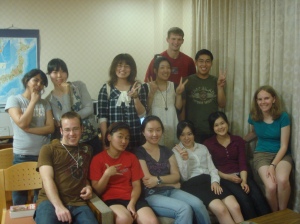




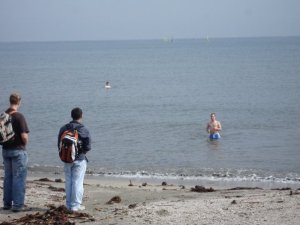


 August 6, 8:15 AM
August 6, 8:15 AM
